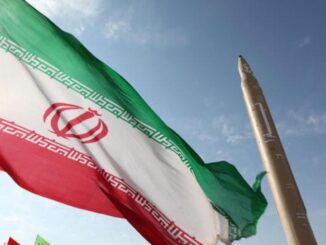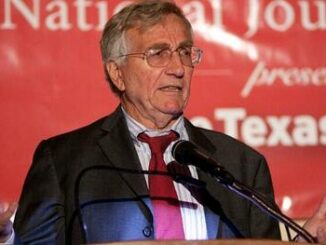
During US President Joseph Biden’s trip to Saudi Arabia, the world was so focused on how Crown Prince Mohammed bin Salman would respond to his plea to pump more oil immediately that it missed a bombshell: the level at which Saudi oil production will peak.
It’s a lot lower than many anticipated. It’s lower than the Saudis have ever intimated. And with the world still hungry for fossil fuels, it spells long-term trouble for the global economy.
For years, Saudi oil ministers and royals have sidestepped one of the most important questions the energy market faces: What is the long-term upper limit of the kingdom’s oilfields? The guesstimate was that they could always pump more, and for longer; if the Saudis knew the answer, they kept it secret. And then, almost casually on Saturday, Prince Mohammed broke the news, revealing that the ultimate maximum capacity is 13 million barrels a day.

Prince Mohammed framed his answer emphasizing that the world — and not just countries like Saudi Arabia — needs to invest in fossil-fuels production over the next two decades to meet growing global demand and avoid energy shortages. “The kingdom will do its part in this regard, as it announced an increase in its production capacity to 13 million barrels per day, after which the kingdom will not have any additional capacity to increase production,” he said in a wide-ranging speech.
It bears repeating: Saudi Arabia, the holder of the world’s largest oil reserves, is telling the world that in the not-so-distant future it “will not have any additional capacity to increase production.” Let that sink in. The first part of his announcement was well known. In 2020, Riyadh instructed its state-owned oil giant Saudi Aramco to embark on a multiyear, multibillion-dollar program to boost its maximum production capacity to 13 million barrels by 2027, up from 12 million. The project is ongoing, with the first small additions coming online in 2024 followed by larger ones in the following three years.
But the second part was completely new, setting a hard ceiling at a much lower level than the Saudis have themselves discussed in the past. Back in 2004 and 2005, during Riyadh’s last big expansion, the kingdom made plans to expand its pumping capacity to 15 million if needed. And there was no suggestion that even that elevated level was an upper limit.For example, Aramco executives told the CSIS think tank in Washington in 2004 that the company could sustain output levels of 10, 12 and 15 million barrels a day for 50 years if needed. At the time, Riyadh was fighting the views of the late Matt Simmons, author of the much-discussed book “Twilight in the Desert: The Coming Saudi Oil Shock and the World Economy.” The book argued that peak Saudi oil production was just around the corner.
One reason why Saudi Arabia is now setting a lower production ceiling may be related to climate change. Unsure about future oil demand growth, Riyadh may calculate that it’s foolish to spend billions of dollars in new capacity that may not be needed.
In his speech, Prince Mohammed stressed the “importance of assuring investors” that policies do “not pose a threat to their investments,” with the aim of avoiding “their reluctance to invest.” I don’t think Prince Mohammed was talking about Wall Street money and hedge funds when he said “investors.” It’s a term that also covers Saudi Arabia’s interests.
Oil demand forecasting is as much art as science — and the kingdom is conservative by nature. A decade ago, then Saudi energy minister Ali Al-Naimi said Saudi Arabia would be “lucky” to be pumping more than 9 million by the early 2020s. “Realistically, based on all projections that I have seen, including ours, there is no call on us to go past 11 million by 2030 or 2040.” The reality has turned far more positive than he anticipated: next month, Aramco will lift daily production to just above 11 million barrels.
If demand proves stronger in the coming years than the Saudis currently anticipate, the kingdom may simply revise its investment plans, and announce it’s able to boost output further. But Prince Mohammed sounded rather definitive in setting that 13 million upper boundary. If money isn’t the constraint, then it must be geology.
For years, Saudi Arabia has brought new oil fields online to offset the natural decline of its aging reservoirs, and allowed Ghawar, the world’s biggest oil field, to run at lower rates. As it seeks to boost production capacity and not just offset natural declines, Aramco is increasingly turning to more expensive offshore reservoirs. Perhaps Riyadh is less confident in its ability to add new oilfields. Ghawar itself is pumping far less than the market assumed. For years, the conventional wisdom was that the field was able to produce about 5 million barrels, but in 2019 Aramco disclosed that Ghawar’s maximum capacity was 3.8 million.
If the obstacle to boosting production is geology, rather than pessimism about future oil demand, the world faces a rocky period if consumption turns to be stronger than currently expected. For now, Saudi peak production is a relatively distant matter, at least five years away. More urgent is whether Riyadh would be able to sustain its current output of 11 million — something it has achieved only twice in its history, and then only briefly — let alone increase it further. But that ceiling will matter towards the end of the decade, and perhaps even earlier.
Despite widespread talk about peak oil demand, the truth is that, for now at least, consumption keeps growing. The world relies heavily on three nations for crude: the US, Saudi Arabia and Russia. Together, they account for nearly 45% of global total oil supply. With US investors unwilling to finance a return to the days of “drill, baby, drill” at home, American output growth is now slower than it was in the 2010s. Russia faces an even darker outlook as the impact of Western sanctions not only curb current supply, but also hinder its ability to expand in the future.
In an era of climate change, Saudi oil production will be, ironically, even more important. And Riyadh has now, publicly, set a hard limit on how much it can pump. This time, oil demand will have to peak — because there won’t be additional supply. Ultimately, there are only two routes to that outcome: Voluntarily, by shifting to low-carbon sources of energy such as nuclear power or wind; or by compulsion, via much higher oil prices, faster inflation and slower economic growth. If we don’t take the first path, we’ll be forced to follow the second.



